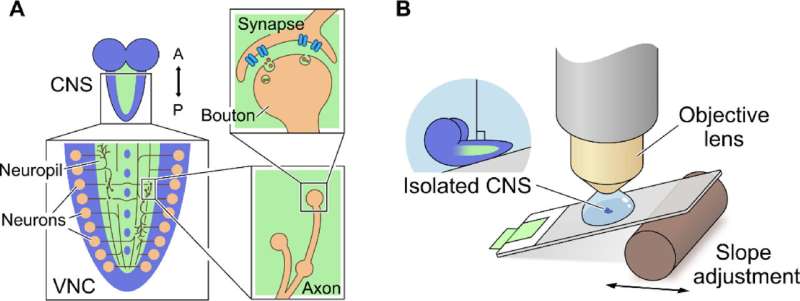Extraction of bouton-like structures from neuropil calcium imaging data

Chemical transmission at a synapse between two neurons is a core step for information processing in neural networks. To reveal the information processing in the brain, which consists of a huge number of nerve cells (or neurons), analysis of the temporal activity of synapse populations is essential.
Recent advances in optical technology allow us to visualize neural activity by fluorescence signals reflecting calcium ion influx into neurons originating from their neural activity. However, due to the small size of synapses (a few microns) and the large number of them (thousands of synapses in the field of view of a standard microscope), manual extraction of each synapse from functional imaging data is laborious.
In a study published in Neural Networks, researchers from The University of Electro-Communications and The University of Tokyo in Japan devised a new procedure to extract individual synapse-like structures from calcium imaging data.
In this study, the authors used neural circuits of fly larvae as a model since the circuits have been intensively investigated at a cellular level. The researchers carried out calcium imaging of the central nervous system of fly larvae using a membrane-anchored calcium ion-sensitive fluorescence probe. For extracting thousands of synapses from the obtained data, an algorithm termed PQ-clustering was developed based on powerful mathematical approaches from graph theory and statistical physics.
With PQ-clustering, individual synapse-like structures were extracted from the calcium imaging data of the central nervous system. By detailed analysis of the extracted data, the research group identified a small number of synapses that synchronize during fictive locomotion (a neural activity observed in an isolated nervous system), suggesting that these synapses organize the timing of circuit activity.
To test the range of applicability of this algorithm, the research group generated a series of artificial data mimicking calcium imaging data and compared the performance of PQ-clustering with other algorithms. The comparison showed that the PQ-clustering algorithm outperforms other clustering algorithms, especially in the data including synchronous activity. This result implies the usefulness of this algorithm in analyzing other neural circuits showing diverse spatiotemporal activity patterns.
More information: Kazushi Fukumasu et al, Extraction of bouton-like structures from neuropil calcium imaging data, Neural Networks (2022). DOI: 10.1016/j.neunet.2022.09.033


















